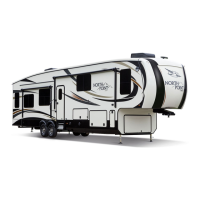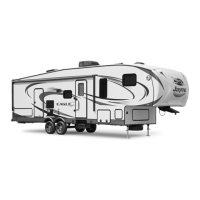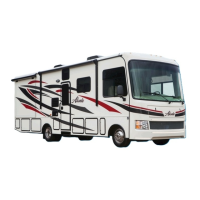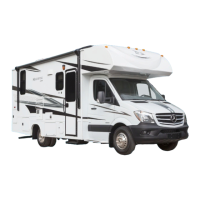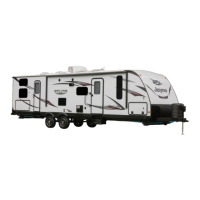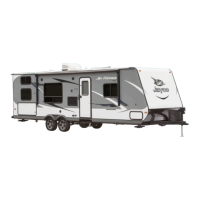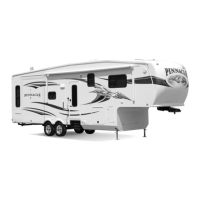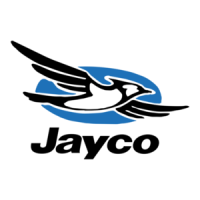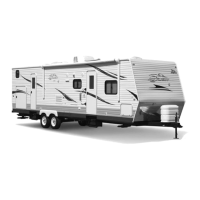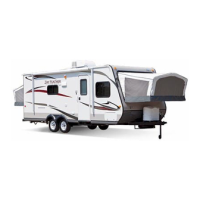81
fuel & propane SyStem
DOT propane cylinders must be transported and stored in an upright position
so the pressure relief device will function properly. Laying a DOT propane
cylinder on its side may potentially create a very dangerous situation.
200,000 BTU/hr. It is used to connect propane cylinders to regulators, hoses and other ttings.
It is not for use on gas grills and other low pressure devices. DOT cylinders equipped with
an OPD and ACME type 1 service valve are identied by the triangular service valve knob.
DOT cylinders are typically marked with “top” or an arrow to indicate the correct orientation
of the cylinder(s). Do not mount, store or transport any cylinder other than the in proper
position indicated.
Be sure to securely re-install DOT cylinder(s) to the recreation vehicle after they have been
removed for lling or replacement. Always close the service valve and install a dust cap or
plug when transporting or storing disconnected containers whether full or empty.
ASME tanks are permanently mounted to the RV and are commonly used on RV motor
homes.
The capacity of ASME tanks is expressed in gallons. ASME tanks are lled while the tank
is tank is attached to the motor home by a qualied propane facility. ASME tanks are
equipped with an automatic stop ll valve designed to reduce the potential of overlling.
ASME propane tanks are also equipped with a P.O.L. service valve that is for connection of
the supply hose with a left hand threaded brass P.O.L. tting from the tank service valve to
the two-stage regulator. Not for use on gas grills and other low pressure devices.
Propane is a true gas compressed into a liquid form. As the fuel is released from the container,
it changes to vapor which is then used for the operation of the appliances. Propane will not
run through the appliances in the liquid state.
Propane expands 1½ percent for every ten degrees of increase in temperature. It is imperative
to leave sufcient space inside the container to allow for natural expansion of gas during
warmer weather.
The main shut off valve must be kept closed at all times unless you are using the propane
system or lling the propane cylinder. When the cylinder is disconnected from the hose,
install the valve cover that is attached to the container.
Close the propane cylinder main shut off valve by hand tightening only. Use of tools creates
a potential to over tighten the valve (damaging the interior seals on the cylinder valve seat).
If this type of damage occurs, the cylinder will not close properly.
The following label should be kept permanently afxed to your RV.
NOTE: Tanks are to be installed, fueled and maintained in accor-
dance to State and Local codes, rules, regulations or laws.
